The Qur’anic Botanic Garden at Qatar Foundation exhibits and conserves the plants mentioned in the Holy Qur’an, as well as rare flora native to Qatar.
Q Life spoke with Fatima Saleh Al-Khulaifi, Manager of Qur’anic Botanic Garden (QBG), to understand the roles QBG fulfils in the community and the garden’s ambitions for the future.
What was the inspiration behind establishing the Qur’anic Botanic Garden?
QBG is both a garden and a centre of excellence for knowledge, education and research, inspiring appreciation of nature and fostering responsibility for our environment.
The garden was established to promote understanding of the plants, botanic terms and conservation principles mentioned in the Holy Qur’an, Hadith and Sunnah. We work towards this goal by applying scientific innovations, building appreciation of cultural traditions and providing unique opportunities for learning.
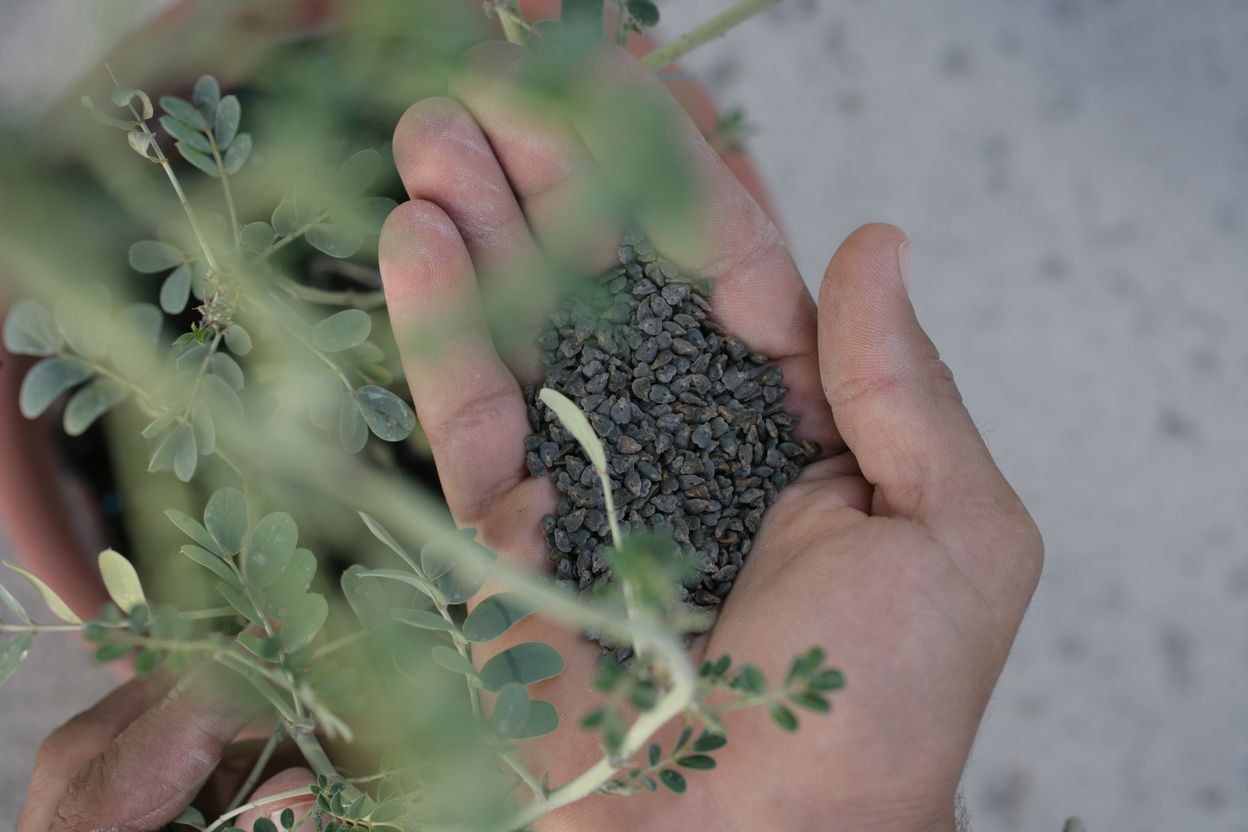
Tell us more about the educational, environmental and cultural roles that the QBG plays in the community?
QBG plays five roles in the community, covering the environment, education, science, culture and recreation.
The garden first and foremost aims to maintain and preserve the diversity of plants collected from different regions of the world against dangers or threats.
QBG’s programme for schools provides information on plants, horticulture, conservation and cultural heritage through applied and interactive activities.
QBG also facilitates research on Horticulture, Conservation and Biotechnology, as well as the medicinal and socio-economic value of the plants of the Holy Qur’an and Hadith.
The revival of cultural tradition is a further key goal for QBG, which aims to be a primary destination for the whole family to enjoy and learn.
Finally, QBG boasts a unique design and set of objectives – it is an inspiring and generous place, committed to serving its community.
How many plants are currently in the garden, and what are their main ecological groups?
QBG currently protects and showcases 60 plant species from three ecological groups – desert, Mediterranean and tropical.
In addition to the main garden, what other educational programmes do you provide?
At QBG, we offer a variety of programmes targeted at different school levels and ages – from ‘Fun & Learn’ activities for pre-school and primary school students, to complex programmes focused on food security for older secondary school students.
We also host an annual environmental research contest, encouraging secondary school students to broaden their horizons in a competitive setting.
In the community, we run programmes around planting trees, the flowers of spring, and the botanical verses of the Qur’an, as well as hosting various exhibitions throughout the year.
For conservationists, our programmes cover planting, propagation, seeds, herbarium and conservation.
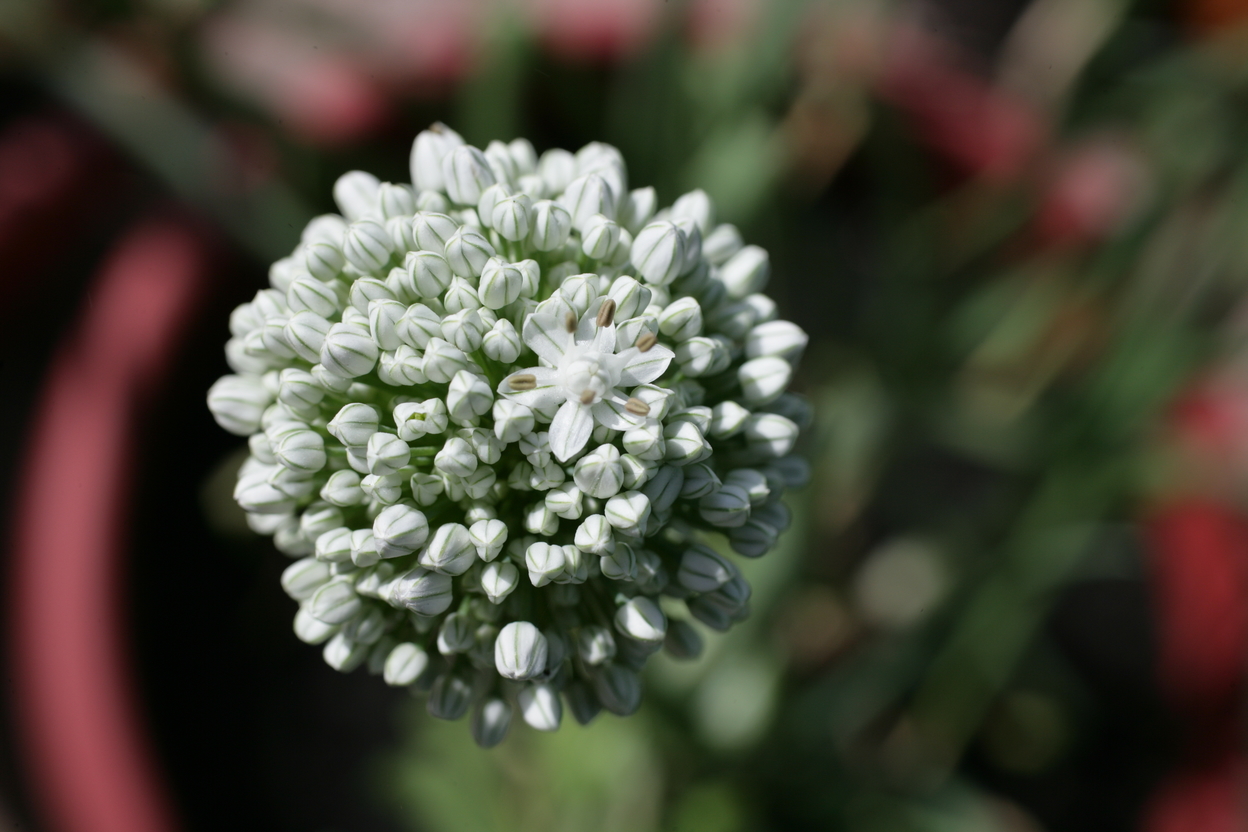
Tell us about the Botanic Museum, which gives particular attention to Islamic heritage and Arabic traditions.
The Botanic Museum was launched to display modules of plant parts and traditional tools, as well as the medicinal plants of the Hadith and traditional food & drinks tools.
The museum’s displays recount the history of the plants in the Holy Qur’an and Hadith, with exhibitions on the environment in Islam, ethics and cultural heritage.
It above all aims to bridge the gap between generations who practiced many of our traditional customs and those who perhaps know a little less of this historic culture.
Considering that the garden maintains a wide array of various plants with different growing seasons, is it challenging to manage the diverse needs of these plants all in one place?
Yes! This is why we have developed three carefully-managed environmental atmospheres for our three different ecological plant groups – desert, Mediterranean and tropical.
How do you want to see the Qur’anic Botanic Garden grow in the future?
In a sense, the fundamental aim for a botanical garden is to conserve seeds in order to secure food – and this is what QBG will continue to work towards for the plants mentioned in the Holy Qur’an and Hadith, as well as all the native flora of Qatar.
Additionally, QBG wants to grow into one of the premier tourism destinations, both in Education City and the State of Qatar, and we look forward to welcoming some of Q Life’s readers to our gardens soon!
The initiative Box of Happiness, in association with Qatar Red Crescent, has a simple mission: to collect new and used toys, wrap them in happy boxes, and donate them to disadvantaged children in Qatar and abroad.
Ahead of Ramadan 2019, Q Life spoke with the founder of Box of Happiness Qatar, Alya Al-Maadheed, and discussed how the initiative teaches children to share and makes others smile.
In your own words, what does the charity aim to achieve through its work?
We aspire to bring happiness to children in need by donating toys which unlock their imaginations and give them a chance to live a happy life.
What gave you the inspiration to set up Box of Happiness?
With the increasing conflicts going on in our region, and the heart-breaking lives some children are living, I wanted to do something to help bring cheer. This is where the idea of Box of Happiness came from.
Why is this cause particularly close to your heart?
Other than it being a donation, it is a gift thoughtfully wrapped to make unprivileged children happy. Box of Happiness gives children the opportunity to communicate with each other, using toys as a medium.
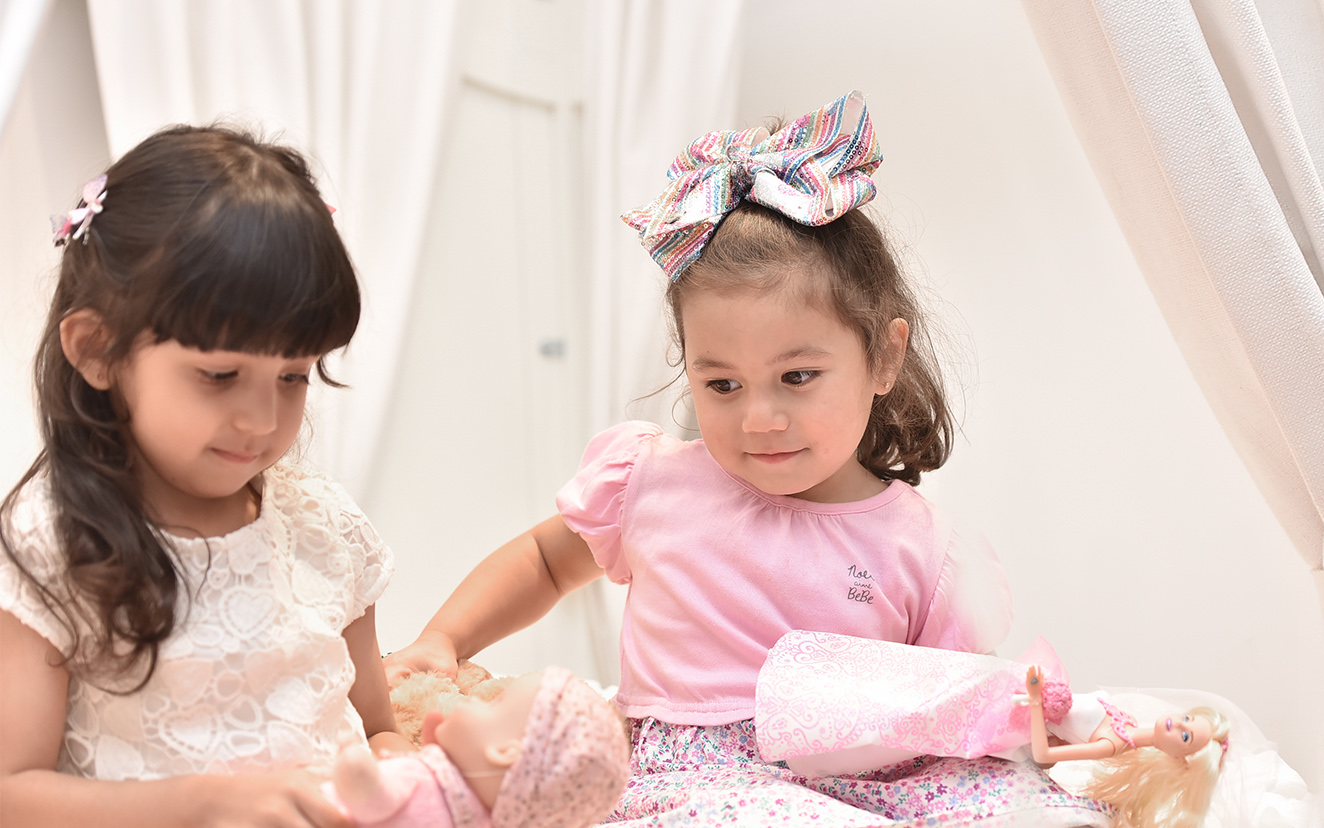
Do you have a particular highlight during your time working for the charity?
Delivering the toys to children and seeing them smile, even if it lasts for just minutes, keeps us going and believing in what we do.
Where else are you looking to make an impact beyond Qatar?
We want to reach children who live in tough conditions and areas affected by conflict, well beyond Qatar’s borders.
What is your vision for the charity in five years?
To become an international initiative through reaching unprivileged children wherever they are. We believe that there are lots of toys to make children happy.
Science, technology, engineering, and mathematics (commonly known as the STEM subjects) are ingrained in our society. Everywhere you look, scientific and technological innovation is powering the objects and ideas driving humankind forward.
With an economy that is rapidly transforming to one based on knowledge rather than hydrocarbons, Qatar has become a hotbed for innovative creativity, and it is young people who are leading the charge.
Supporting this drive is the Qatar Computing Research Institute (QCRI) which, since March 2017, has hosted the annual Creative Space Fair at Education City. This year the event welcomed over 500 visitors, introducing complex concepts such as robotics, chemistry, and thermodynamics in child-friendly and accessible ways.
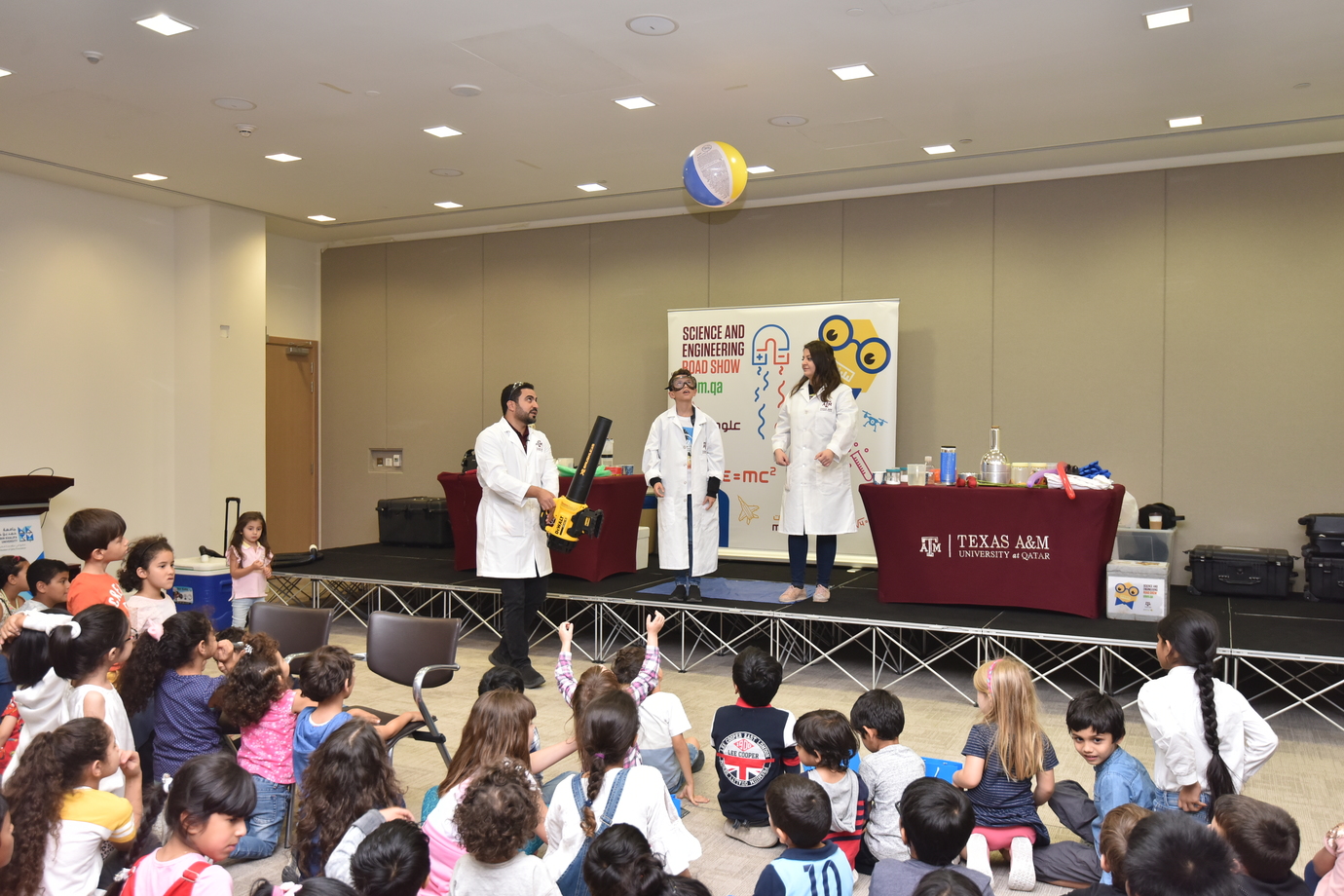
For Dr Eman Fituri, Director of Educational Initiatives at QCRI, exposing youth in Qatar to STEM concepts from an early age is imperative in nurturing a passion for science, and encouraging young Qataris to pursue a career in these fields.
“Children have the capability of understanding STEM concepts at a very early age”, she says. “They already get exposed to these concepts in their everyday life, whether it is noticing the sun and wind, or playing with a tablet, or just simply when holding their breath”.
Dr Fituri wants to see more done to highlight and explain these concepts to children: “I would encourage young people to observe the world around them and ask questions because curiosity is one of the basic 21st-century skills kids will need in order to become successful in their future”.
So how do Dr Fituri and her team do this? At the Creative Space Fair, there is a wide range of activities on offer, provided in partnership with entities such as Qatar Science Club, Tebyan, Geek Express, and ibTECHar. All are designed to be fun and engaging, with clear educational value, able to be completed in under 10 minutes, and, crucially, can be safely reproduced by children in their own homes.
“Curiosity is one of the basic 21st century skills kids will need in order to become successful in their future”
– Dr Eman Fituri, Director of Education Initiatives at QCRI
The augmented reality activity was this year’s greatest hit, particularly amongst the youngest audience. “The children find it fascinating to see their own drawings come to life, and to be able to interact with these drawings”, says Dr Fituri. Older children were more drawn to the virtual reality zone, where complete mini virtual worlds could be created, while middle schoolers found joy in developing their own artistically-inclined bots!
A do-it-yourself hologram projector, 3D printers, and programmable robots also proved popular. “I can confidently say that each one of our activities is appealing for at least a certain age group, if not for all”, says Dr Fituri.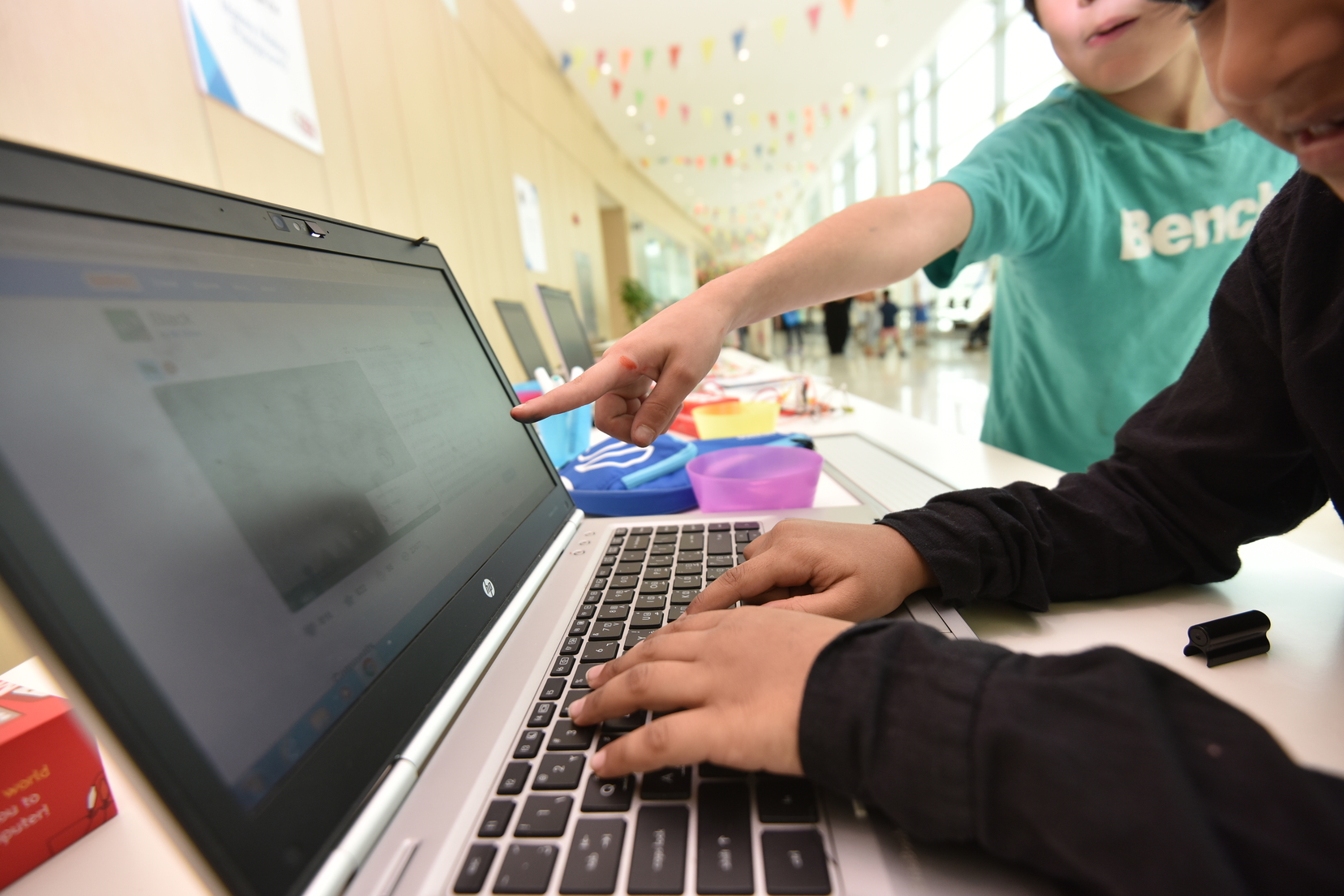
For its recent third iteration, the Creative Space Fair was significantly more ambitious and wide-ranging than its first edition in 2017. But beyond the scope and excitement of the activities on offer, Dr Fituri credits the event’s uniqueness to the army of contributing organisations and volunteers that make it all possible. It is a truly collaborative community initiative, driven by donors, QCRI staff members, their spouses, university students, school teachers, parents, and many more, all of whom share in the institute’s vision of engaging youth with STEM concepts.
What started as an effort to allow children and parents to sample a little of what QCRI offers in its traditional programmes (weekly classes and summer camps, for example) has grown into its own vibrant annual science event, now further enriched by external contributors.
And don’t assume it’s only for the kids! As Dr Fituri points out, Texas A&M’s Road Show which was presented during the Fair “was equally entertaining and educational for both parents and children”.
The women of Qatar are an inspiration, from being a force for good and progress in our communities, to leading on world-renowned achievements and innovations. Happy International Women’s Day 2019.
Ahead of her visit to Qatar for National Sport Day 2019, US Olympic medallist Ibtihaj Muhammad spoke with Q Life about the importance of sport and her own inspiring experience as an athlete.
Beyond fencing, Ibtihaj is an accomplished entrepreneur, activist and speaker, and a leading figure in the global discussion on gender equality and diversity – issues which Qatar has long sought to promote both at home and worldwide.
Why in your view is it important for people to come together and celebrate National Sport Day?
Sports help to build a stronger and healthier community. Sports are one of the few things that transcend socio-economic status and bring people together regardless of their background. It encourages people to get off their couches and exercise.
What inspired you to take up fencing for the first time at age 13?
My parents were looking for a sport for me to play where I would be covered and they would not have to alter the uniform because I wore a hijab. Fencing because of the long jack and pants was an opportunity to participate in a sport that uniquely accommodated my religious beliefs.
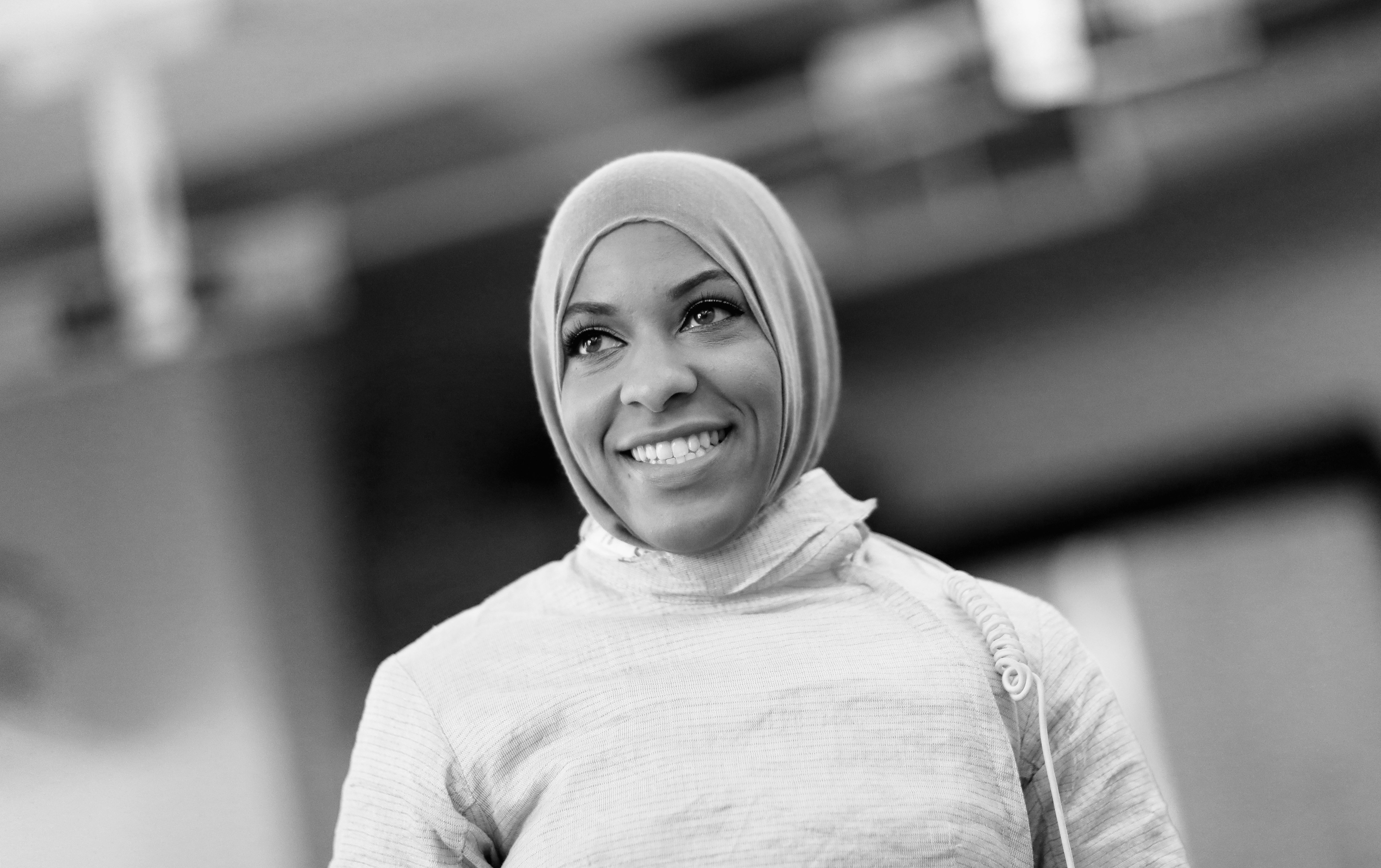
Photo by Ezra Shaw/Getty Images
In your book Proud, published last July, you talk openly about the challenges you faced once within the Team USA setup. Can you tell us a little about some of these and how you overcame them?
So much of overcoming adversity and navigating various obstacles throughout my career is directly connected to my resilience. I’ve never allowed other people’s misconceptions about me or my community to define me. The idea that I wasn’t fit for elite sports because I wore hijab was silly to me. It was an opportunity to show not just the people within fencing, but more importantly all of us, what we’re capable of when we believe. It was important for me to show our youth that we are more than society’s limited expectations of us.
In your view, what does it mean to be an athlete in 2019?
Very simply, an athlete is any person who trains and works towards becoming better in their sport or physical exercise.
What message would you hope to convey to young aspiring athletes who see you as a role model?
It is my hope that they see themselves in my journey. There was a lot of blood, sweat, tears and hard work that went into achieving what I have, but none of it would have been possible without me placing my faith over my fears.
Having won an Olympic medal in Rio, do you aspire to win more? And beyond sport, what does the next chapter in life have in store for you?
I feel so blessed to have captured a bronze Olympic medal and feel content with what I have achieved in sport. I’m not sure what the future holds for me on a competitive sporting level, but I do hope to continue to use sport as a vehicle to reach people and change communities in meaningful ways.
How Qatar’s vision of a sustainable 2022 FIFA World Cup has led to groundbreaking architectural projects.
Mohammed Al Mulla is the project manager for Ras Abu Aboud stadium. He is responsible for delivering one of the key 2022 FIFA World Cup venues, currently one of eight being built in Doha.
The 40,000-seat stadium is based on a unique modular design, using recycled shipping containers, and is set to be entirely dismantled and repurposed when the 2022 World Cup concludes.
It is a visionary sustainable design that looks set to be emulated by architects and designers around the world. The logistics involved are breath-taking, and the pressure to deliver intense.
Ask Al Mulla to describe to a small child what he is doing, however, and his eyes light up. His hands begin to sort through an imaginary pile of multi-coloured bricks.
‘The stadium will be built using the same concept as the toy every child has – Lego,’ he says. ‘In simple words, the main structure will be built of steel, and as we go up from floor to floor, we are going to insert the containers across the sides of the stadium, which reminds us of how children play with Lego.
‘We can put it together easily, and at the end of the day we can take it apart, just as a child packs up his Lego, ready for further play.’
Simple, then – yet visionary. He explains: ‘We were thinking through what the eighth stadium could look like, and came up with this unique concept of a sustainable stadium. We asked: ‘What is going to benefit the people of Qatar – now, but also in the future?’
‘What do they need? What do others around the world need? We want to leave a legacy, but we don’t necessarily need eight stadiums here in Doha all the time – this one can be packed up and reassembled elsewhere, even internationally. I think people will really appreciate what we have done, and the concept behind it.’
Al Mulla is passionate about the unique nature of the Ras Abu Aboud stadium. ‘It is different from other stadiums being built in a traditional way,’ he says. ‘First of all, it can be carefully dismantled and used elsewhere in different forms – anywhere in the world. It is flexible, so can be reused as smaller stadiums.
‘Also, because it is being made from reusable material, it has a shorter build time, it has a lower cost, we are using less construction material, and there is less waste on site, with lower carbon emissions. It is win-win.’
He adds: ‘The VIP boxes, control rooms, operational rooms will all be made from shipping containers, allowing for flexible reuse of these components. The steel framework can be dismantled and used elsewhere after the World Cup. It is sustainability in action.’
The concept was dreamt up by Fenwick Iribarren Architects and each section of the stadium is separate. The Supreme Committee for Delivery and Legacy now see this as one of the jewels in the World Cup crown. Even the lavatories and concession stands can be taken out and reused.
The reuse of shipping containers is a nod to the seafaring trade conducted over centuries on the waters of the nearby Gulf, and give the stadium a functional forwardlooking edge.
Reusable seats will complete the 450,000 square-metre venue, enviably located on the shores of the sparkling Gulf. It is also highly accessible for the many overseas visitors expected in Qatar, being 1.5 km from Hamad International Airport in a previously mainly industrial area of the city.
After the World Cup, the site will be repurposed as a glamorous waterfront development for local residents. Again, the low-impact nature of the construction will come into play, leaving little environmental footprint.
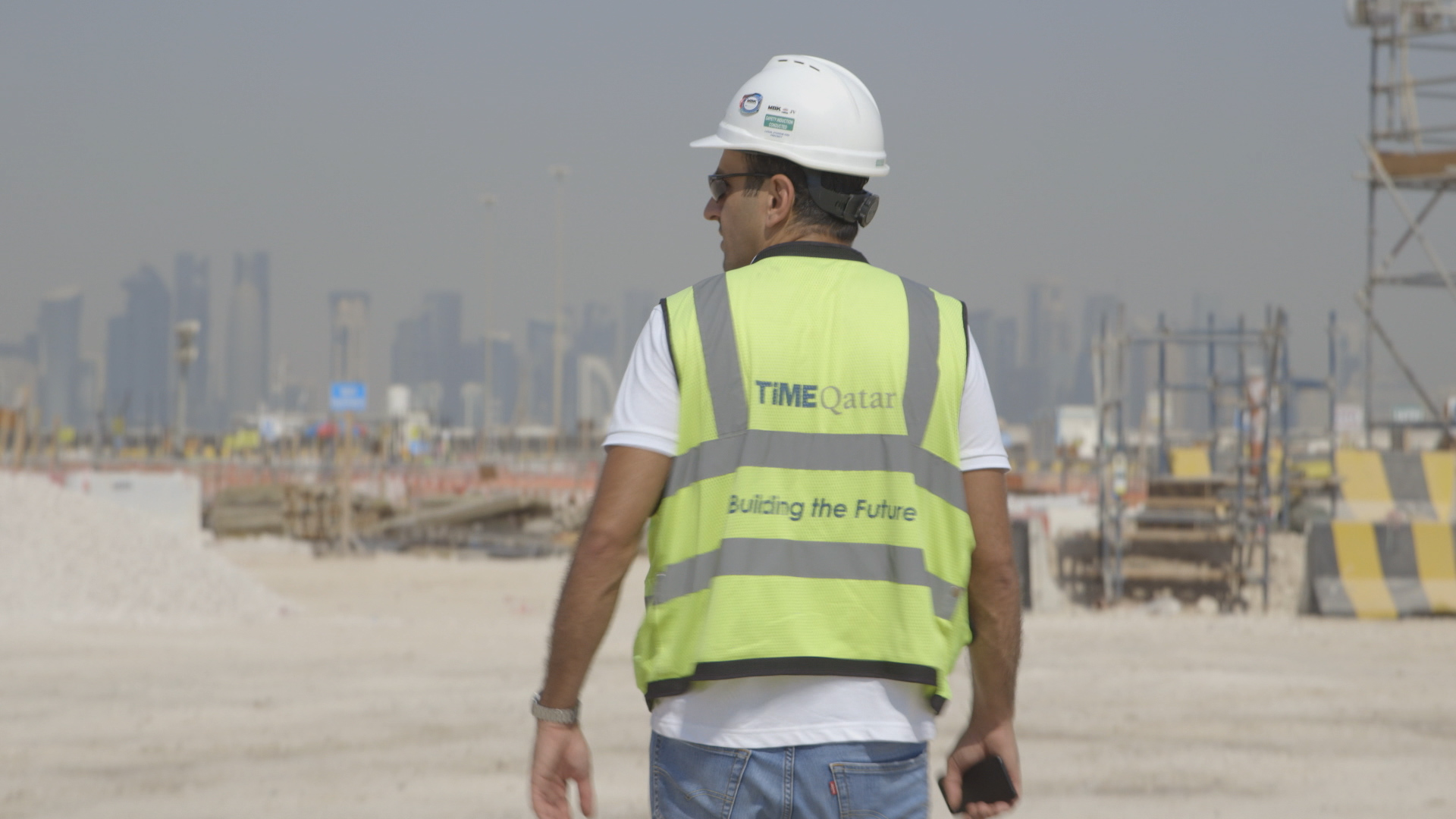
Al Mulla speaks from the site where the dream is taking shape. With the distinctive skyscrapers of Doha in the background, cranes and diggers work ceaselessly to make his vision a reality. Because much of the design is prebuilt, it will spring upwards in double-quick time. As he surveys the works, Al Mulla is aware that he is delivering a blueprint for others to follow in the future.
‘We are pushing the boundaries of design,’ he says. ‘Using large scale recycled material for a reusable modular structure is a huge architectural advance. It is very exciting.’
The stadium will host World Cup matches up to the quarter final. Al Mulla says: ‘The moment I’m really waiting for is when the first match is played here, seeing all the people from Qatar and abroad coming towards the stadium.’
‘Then when it is dismantled, being used elsewhere, it will remind me of all the great team work, and will bring back all the good memories.’
He says: ‘It is an honour to work on a visionary project like this. It is the first of a kind. It is legacy-driven thinking, and it will set a basis for coming generations on how to optimise and come up with sustainable solutions, not only for sporting venues, but also on other construction projects, great and small. It will influence the way humans build in the future. That is a source of great pride.’
Dr Aisha Yousuf, Director of Reproductive Surgery at Sidra Medicine, talks about the growing role of technology and robotics in medicine
The economic transformation of Qatar in recent years is predominantly seen through an infrastructure-focused lens. While cranes and newly-built skyscrapers dot the landscape of Doha and dominate media conversation, the day-to-day, human impact of such transformation is equally important. Diversification of opportunities has empowered men and women to pursue emerging and rigorous career paths in finance, healthcare and sciences.
A female doctor in Qatar, an exemplar of the nation’s investment in human capital, now finds herself at the forefront of the latest revolution in medicine: robotic healthcare.
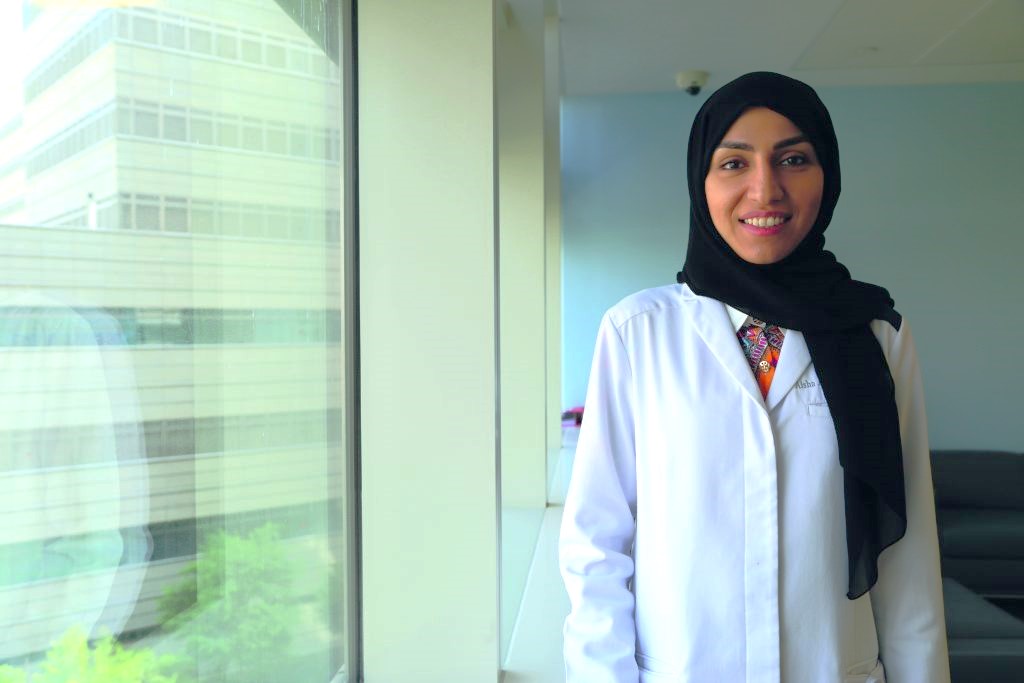
Dr Aisha Yousuf works at Sidra Medicine, a private hospital for public benefit that provides specialised healthcare for women, children and young people. It delivers comprehensive specialist healthcare services such as cardiology, neurology, urology, and plastic and craniofacial reconstruction for children. Additionally, it offers maternity, gynecology, and feto-maternal services for women.
Chaired by Her Highness Sheikha Moza bint Nasser and established by Qatar Foundation (QF), Sidra Medicine embraces best practice medical education, innovative biomedical and clinical research, and patient and family-focused care.
As Director of Reproductive Surgery at Sidra Medicine, Dr Yousuf specialises in robotic and minimally invasive gynecologic surgery. She says: ‘Family is at the core of Qatari culture and the very heart of this is women. It is therefore vital that women can have access to groundbreaking and innovative healthcare services.
‘Robotic Gynecological Surgery at Sidra Medicine is performed through Da Vinci Robot machines, which gives us doctors better visualisation, through 3D cameras and surgical ergonomics.’
The advantages of using robotic techniques mean that operations have become minimally invasive – with smaller incisions that lead to less post-operative pain and faster recovery. It also means that patients can be discharged sooner due to shorter hospital stays.
The addition of Robotic Gynecology Surgery is part of Sidra Medicine’s ambitious plans to set new standards for healthcare in Qatar and the region by leveraging the latest technology, techniques, teaching methods, and attracting leading medical talent, both locally and internationally.
“I consider myself as an example of the education vision for Qatar, particularly as part of QF. I see my journey from student to an employee as one that came full circle, as I graduated from an QF partner university, and then after completion of my training abroad, I went back to work at Sidra Medicine.”
Women are increasingly leading the way in medicine in Qatar, according to Dr Yousuf. She says: ‘We are very lucky to have visionaries like Her Highness Sheikha Moza bint Nasser, who have set things in motion for a whole generation of women.’ Dr Yousuf was inspired to become a doctor by Her Highness. She explains: ‘I had the privilege of meeting Her Highness at my high school for a special event that was hosted for high achievers. I was inspired by Her Highness’s vision for QF and Education City, and that led me on the path to consider medicine as a career choice. I was one of the first students to graduate from Weill Cornell Medicine-Qatar and went on to the University of Michigan Hospital, where I completed my specialization in Obstetrics and Gynecology.
‘Following that I went to the University of Toronto, St. Michael’s Hospital in Canada, and completed a subspecialty fellowship programme in minimally invasive and robotic surgery, under the sponsorship of Sidra Medicine.
‘I consider myself as an example of the education vision for Qatar, particularly as part of QF. I see my journey from student to an employee as one that came full circle, as I graduated from an QF partner university, and then after completion of my training abroad, I went back to work at Sidra Medicine.’
Now, she is glad to see others following in her footsteps. She says: ‘It is very encouraging to see more women entering the field of medicine and research in Qatar.
‘With a female Public Health Minister, Her Excellency Dr Hanan Mohamed Al-Kuwari, at the helm of advancing healthcare, there is no better time for us to be in healthcare.
‘I find it motivating when I see more Qatari female colleagues joining our diverse teams and me in the operating rooms, as we continue to save and change lives.’
Stars of Science inventor Mohammed Al Jefairi talks about his current project to help hearing-impaired children and people with disabilities.
How did Stars of Science allow you to grow as an inventor? What did you hope to achieve from being part of the World Innovation Summit for Health (WISH) this year?
Stars of Science is a powerful shortcut for any great idea. It’s a path for shifting your invention to the next level. WISH is another shortcut that has a huge potential for providing a great forward shift to an innovation along its journey, and I am looking forward to seeing what we can create.
Can you tell us about your invention SeeDo, the robot that communicates with hearing-impaired children to improve their vocabulary?
This interactive learning technology – or friendly robot named ‘Robert SeeDo’- helps children learn sign language, and makes learning fun. Studies show that the early years of a child’s life are the most crucial learning period of all. By the age of just six years old, the average child will have picked up 1,000 words in their vocabulary. In that time, a hearing-impaired child will have picked up only 50 words. These children risk getting left behind by society as they struggle to communicate clearly and fully interact with the world around them. I realised technology could bring massive advances for them as they learn. It has been heartwarming seeing the joy on these children’s faces as they realise what Robert the robot can do for them.
How does SeeDo operate?
On the outside, SeeDo looks like a fun and friendly character with a large robotic hand that can communicate in all forms of sign language. It can also display all kinds of useful visual content on its inbuilt TV screen. On the inside, SeeDo is engineered withelectronic processors, a motion sensor and specialised depth cameras that can capture and interpret hand movements, so that SeeDo can accurately respond to a child’s sign language. That is pretty revolutionary.
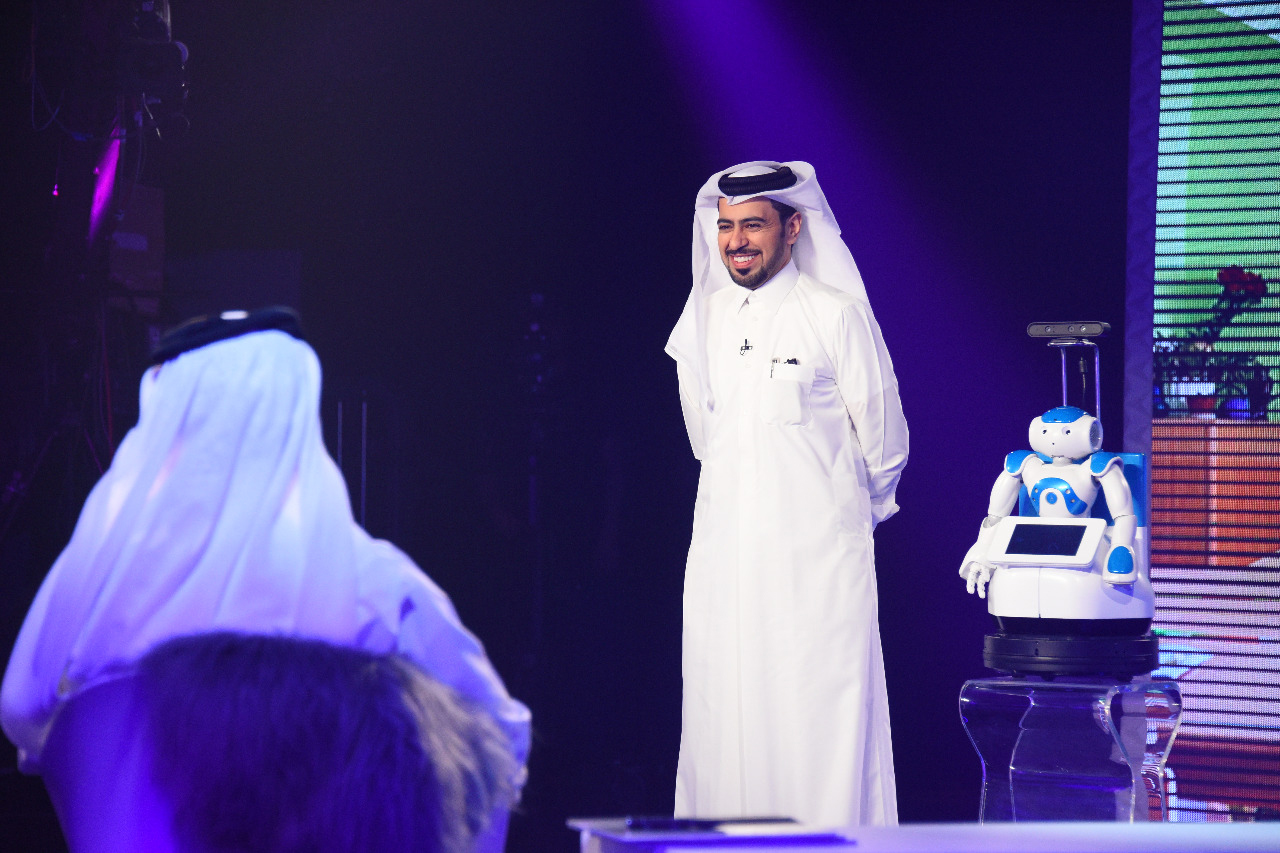
Your company, Abilitx, develops groundbreaking technology for people with disabilities. What inspired you to start this company?
I love the opportunities that Stars of Science provides for innovators. I was inspired to do the same but with a focus on helping young inventors and researchers develop projects that relate to and can help those with disabilities. Abilitx is committed to creating a genuinely inclusive society for everyone, with stronger opportunities and better solutions for all people with disabilities. So many established learning and training tools for people with disabilities are not yet taking full advantage of the powerful technology that most of us take for granted.
Our mission is to build the world’s biggest network for people with disabilities and develop tomorrow’s innovative solutions that will transform the lives of people with disabilities.
As a leader in health-based innovation in Qatar, is there any advice you would like to give to younger generations?
We are still at the beginning of our journey. Humanity needs our help and support. We need more researchers, and I invite more people to move into health-based innovation as it has a huge scope for improvement. This is the future.
Ali Al Kuwari explains how Doha’s newest district will connect communities through sustainable and smart technology.
Qatar is a nation built on age-old traditions. Nowhere is this more apparent than in Doha’s latest development, Msheireb Downtown Doha.
It brings together the best of the past with modern innovative technologies and thinking, marking the reemergence of Qatari heritage in the heart of the city.
Ali Al Kuwari, Acting Chief Executive Officer at Msheireb Properties, explains the genesis of the project, located in the oldest part of the capital.
‘Msheireb Downtown Doha was born of a desire by the nation’s leadership to redefine the course of the city’s development and return to the cultural roots upon which Doha was founded,’ he says.
‘Msheireb is the world’s first sustainable downtown regeneration project, reviving the old commercial district with a new architectural language which is modern yet inspired by traditional Qatari heritage and architecture.’
What does this mean in practice? Al Kuwari says: ‘Msheireb Properties spent three years researching Qatari architecture and urban planning all over the world with the most respected experts in the industry, in order to realise an architectural language rooted in the best of the past that may be preserved for and by future generations.
‘The Qatari tradition is reflected by the design of buildings, materials used, lay-out and preserving the names of streets. And the Heritage Quarter will revive Doha’s historic district.’
The project brings alive the culture and traditions of Doha prior to the country’s rapid economic development. With the relocation of the Qatar Financial Centre, it will be the new financial hub and downtown, embracing business and community in equal measure.
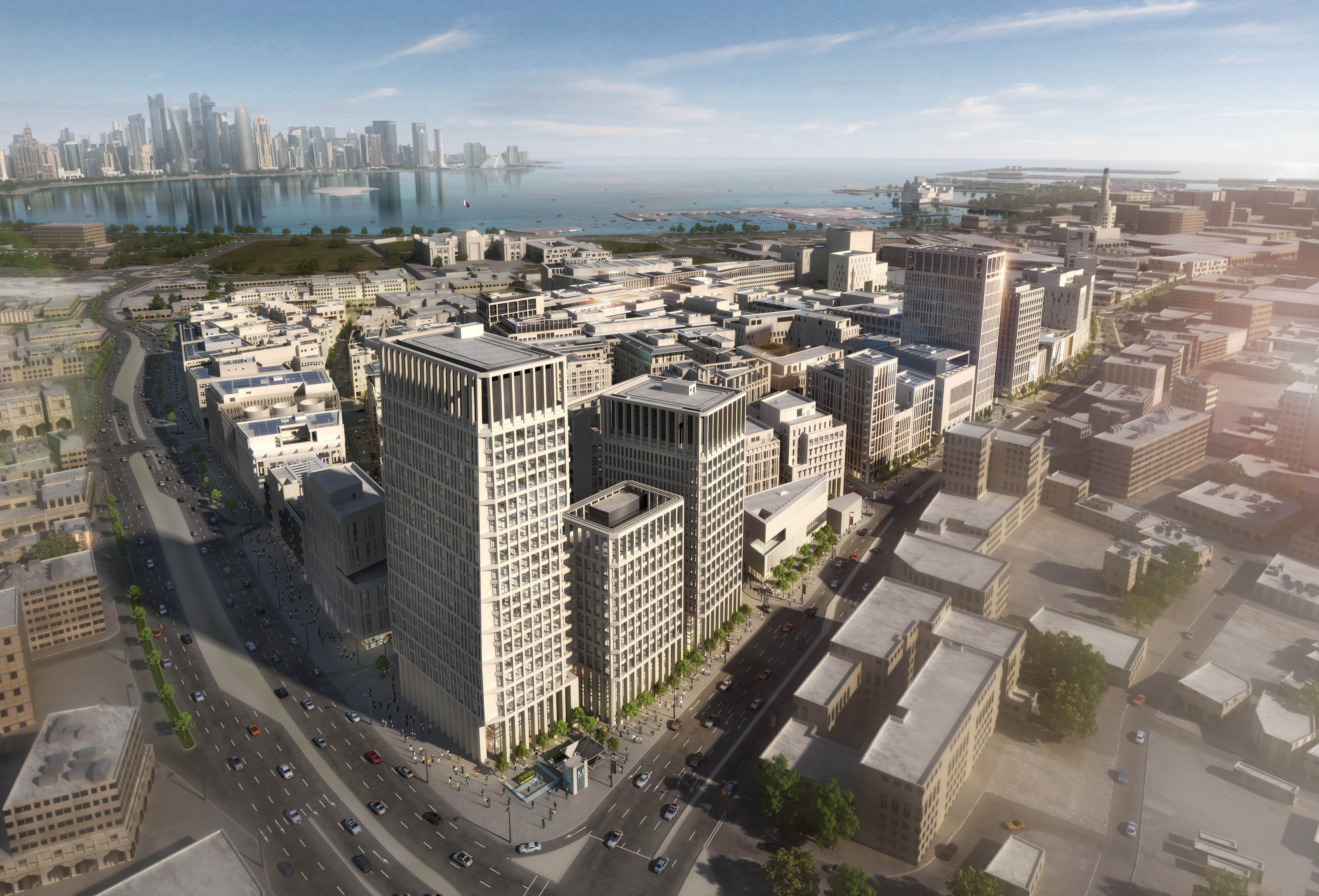
The area will have integrated smart technologies, superfast connectivity, and state-of-the-art health and safety and environmental controls.
Transport links are key, including Doha’s metro. Business travelers are also catered for with options that include the Al Wadi Hotel MGallery Doha, Park Hyatt and the Mandarin Oriental Hotel.
The new area is located in the heart of Doha, 20 minutes from the airport, and 15 minutes from the city centre, next to Souq Waqif and the Corniche.
The development has been carefully planned to be low-impact environmentally. Al Kuwari says: ‘It is the first sustainable regeneration project of a downtown in the world, and all our buildings are characterised by their water and energy efficiency, leading us to be a very green and sustainable project. Once all of our buildings become operational, we expect that Msheireb Downtown Doha will be the most sustainable city district in the world.’
‘That isn’t our only world-first. Not only is it the first smart city in Qatar, our research has confirmed that it is one of the smartest city districts in the world, integrating advanced systems from the beginning. Elegant town houses and apartments with cutting-edge technology will make residents’ lives very easy.’
Al Kuwari says: ‘The Heritage Quarter is a historic area where traditional courtyard houses and the Msheireb Prayer Ground dating from the first decade of the last century have been restored, alongside a LEED Gold certified mosque.
‘The Heritage Houses, commonly known as the Bin Jelmood House, the Company House, the Mohammed bin Jassim House and the Radwani House have transformed the Heritage Quarter and created an important cultural destination within the development.’
He adds: ‘The four courtyard houses have been converted into culturally significant museums and exhibition buildings. Rooted in local history, these courtyards and spaces showcase important aspects of Qatar’s history and memories of old Doha.
‘Msheireb Museums aim to enliven local history in order to better understand Qatari identity and fully realise Qatar’s aspiration for greatness. They celebrate the history of four century-old heritage houses in Doha’s oldest district which have been transformed into museums.’
Even the name ‘Msheireb’ has significance, referring to an old well in the area where people used to come and drink water.
Al Kuwari says: ‘That’s why the area was called by that name, and it maintained the name until today. We are still using the name Msheireb to preserve our history and heritage, and to revive the old days when this area was the center of trade and business in Qatar. It is now a trademark that everyone knows. It is part of our heritage and history which we want to maintain for future generations.’
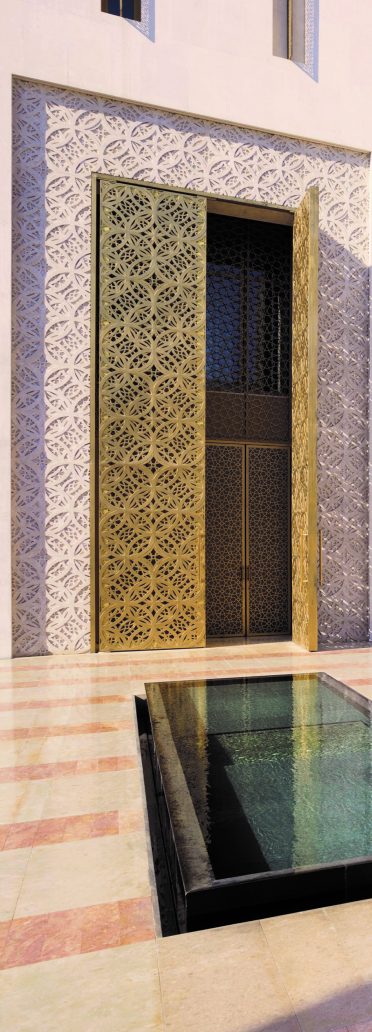
Qatar National Convention Centre
The Centre was built according to the US Green Building Council’s Leadership in Energy and Environment Design (LEED) Gold standard.
QNCC is designed to be 32% more efficient than a comparable convention centre, and is fitted with over 3,500m² of solar panels, providing 12.5% of the Centre’s energy needs.
Lusail Smart City
Water-sensitive landscape plan featuring plants native to Qatar and minimising lawn area.
Walls functioning as an artificial reef and providing habitat for various flora and fauna.
“Smart” city design, with an intelligent traffic system, smart street lighting, and smart waste and water management.
RasGas Tower
This tower was also built according to the US Green Building Council’s Leadership in Energy and Environment Design (LEED) Gold standard.
It was the first building in Qatar to receive this prestigious
certification.
One eye test at a time, Qatar Creating Vision works tirelessly to prevent childhood blindness in some of the world’s most disadvantaged communities
Preventing childhood blindness is surely one of the most valuable of all goals. Qatar Creating Vision is on a mission to do just that – in some of the world’s most disadvantaged communities.
Qatar Creating Vision was established in 2015 thanks to the generosity of the Qatar Fund for Development (QFFD). Led by the international eye care charity Orbis, it aims to deliver 5.6 million eye tests and treatments to children across India and Bangladesh.
There are 473,000 blind children across these countries, with more children affected by blindness in India than anywhere else in the world.
Schoolchildren are tested and given glasses if necessary, so they can see the blackboard. Antibiotics are given for infections, preventing sight loss. And teachers and health workers are trained to spot eye conditions, so they can be treated promptly, even in remote rural settings.
A specialist centre in Bangladesh now tackles Retinopathy of Prematurity (ROP), an eye condition affecting premature babies.
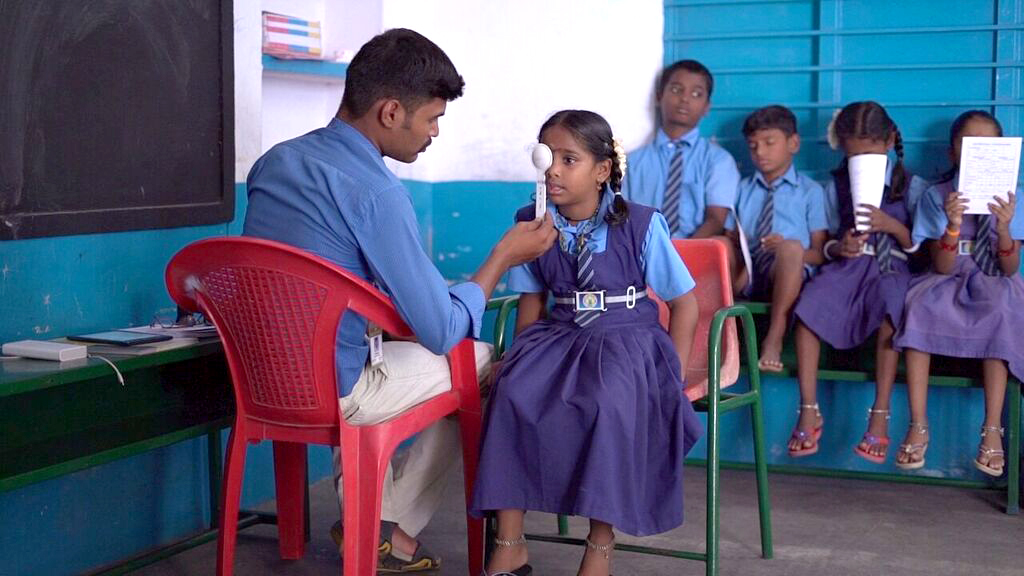
Ali Abdulla Al Dabbagh, Deputy Director General for Planning at the Qatar Fund for Development, says: ‘Qatar Creating Vision programmes run all year round and to date over 3.6 million screenings have been provided to children, and over 45,000 people have been trained on eye health, from ophthalmologists to health workers to religious leaders.
‘Around 179,000 spectacles have been prescribed to children and a further 1,100 surgeries have taken place.’
He adds: ‘At the heart of the programme is the mission to identify any abnormality in children’s vision through timely screening, to prevent childhood blindness, and help break the cycle of emotional trauma, social exclusion, and economic hardship that usually accompanies people who have blindness.’
The programme in Bangladesh has been supported by the Orbis Flying Eye Hospital. From the outside, it seems like a typical passenger plane – but on the inside it is truly unique. It features a state-of-the-art teaching facility, complete with operating room, classroom and recovery room.
Over the course of two weeks, 18 Orbis medical volunteers from around the world shared their skills with local eye-care teams.
During the programme, 50 medical professionals were trained and 75 people – including 23 children – were treated.
This year, the programme expanded to support the displaced Rohingya people, struggling with sight loss within camps in Bangladesh. More treatments have been required than expected and most are severe cases, as the majority of Rohingya people have never had access to eye care.